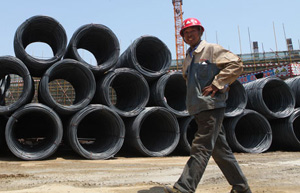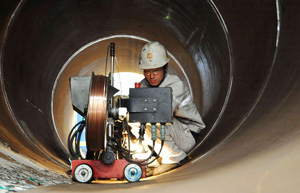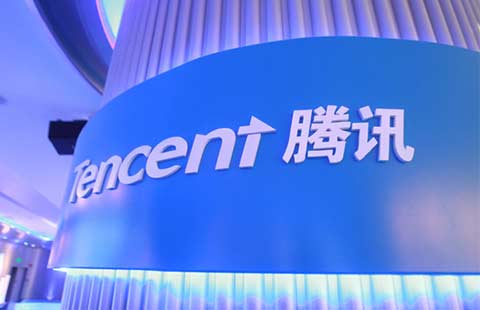China's June PMI at six-month high
(Xinhua) Updated: 2014-07-01 10:34The sub-index for production, seen as a foundation for steady PMI growth, edged up 0.2 of a point to 53 in June, marking a second consecutive monthly increase.
However, Zhao pointed out that "the forces to shore up the PMI are not balanced", citing lackluster sub-indices for imports and employment.
The imports sub-index for June increased slightly by 0.2 to 49.2, a seventh straight month below 50 and pointing to weak demand of the surveyed enterprises to import raw materials from abroad.
After a small decline in May, the employment sub-index of the PMI rebounded by 0.4 of a point to 48.6 in June, reflecting prolonged contraction in the job market.
The sub-index for business outlook fell by 1.4 from a month earlier to 54.8, but 0.7 of a point higher from the same period last year.
Step up targeted measures
Also on Tuesday, British bank HSBC released the final reading for its manufacturing PMI, which came in at 50.7, slightly down from the flash reading of 50.8 but considerably up from May's final of 49.4.Although the HSBC PMI arguably reflects more of the smaller businesses, the June data is in line with the results of the NBS survey.
Despite the tiny revision "the trend of improvement in economic activity remains intact", said Julia R Wang, economist for HSBC Greater China, in an email note.
|
 |
 |
|
China's PMI hits 5-month high, pointing to stabilizing economy |
- Chile hails China as its top trade partner
- New age, new balance and new breakthroughs
- Report estimates 286m potential VR device users in China
- Traditional blacksmith with a Taobao shop
- Shanghai becomes 7th region to cut corporate burden
- Qihoo 360 launches new mobile phone, merges brands
- Making food security a top priority
- Asia embraces sharing economy
















